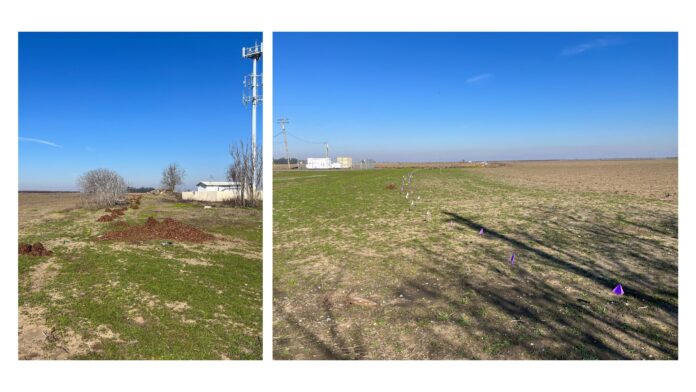City-owned farm Howat Ranch sets precedent in Yolo County area for offsetting carbon emissions
By ZOE SMITH — city@theaggie.org
In collaboration with Yolo County Resource Conservation District, the city of Davis’s Community Development and Sustainability department is working to implement carbon farming techniques that will enhance the local habitat while also drawing as much carbon from the air. Chris Gardner, the city’s open space lands manager, and Tracie Reynolds, the manager of the leases and the open space program, are heading the project for the city.
This is all happening on one specific farm: Howat Ranch, a 760-acre city-owned agricultural property that is the first of its kind in Davis. In 2019, the city of Davis began to use carbon farming techniques on Howat Ranch after they were approached by the Carbon Cycle Institute, a group that uses and promotes farming practices that create increased carbon capture in hopes of combating climate change.
Pelayo Alvarez worked for the Carbon Cycle Institute for over seven years and said that his team initially brought the idea of carbon farming to the city of Davis. The Carbon Cycle Institute partners with resource conservation districts, such as the Yolo County RCD, as well as landowners, farmers and forest owners to implement conservation practices using certain funding programs.
“Most of the funding is from federal programs, like Natural Resources Conservation Service, EQIP Program or Conservation Stewardship Program,” Alvarez said. “We help the landowners find the funding and then help them with technical assistance. We’re trying to promote carbon farming across the state.”
On Howat Ranch, the city is using a two-prong approach to mitigate climate change by reducing tillage and planting hedgerows in farming practices.
One of these habitat-enhancing techniques is called “hedgerows,” which are strips of densely planted trees or shrubs that provide wind breaks on the farm. This creates better conditions for healthy soil and provides biodiversity on the farm.
Reynolds and Gardner’s team has already planted 200 trees and shrubs on Howat Ranch and plan to plant more. The city is also working on a plan to turn 200 acres of Howat’s farmland into a wetland.
To increase carbon capture, the farmers who rent Howat Ranch also uses crop rotation, which means over the span of four or five years, he plants different crops to keep the soul healthy. The crops in the rotation are alfalfa, winter wheat and either sunflowers or safflower. He has also converted all his farm equipment to Tier 4 engines, which are the cleanest in terms of emissions, and practices reduced tilling.
This means that “He tries to pass over the land once and he only goes down about six inches,” according to Reynolds.
All of these practices help to keep the carbon that’s already in the ground there while improving soil composition and health. Together, these actions limit the amount of carbon emitted from producing crops.
“The city just recently approved the climate action and adaptation plan called the CAP update,” Reynolds said. “One of the many action items is to do carbon farm plans for the other city agricultural properties. So we’ll be looking into doing a couple more in the next year or so, but right now, this is the only one that we have.”
The California Healthy Soil Program is a statewide program created by the California State Department of Food and Agriculture that will continue to fund writing these plans so that more private- and city-owned farms can implement carbon farming. Funding is also available through the Federal Department of Agriculture, called the National Resource Conservation Service, so that growers who don’t have a carbon farm plan with their cities can still use the grants to implement these practices.
“We are kind of special here in the city, having a carbon farm plan,” Gardner said. “We’re happy to help fund the writing of this plan and to use our publicly owned property as almost a demonstration piece where we can figure out some of the logistics of how to implement these things in partnership with the growers that farm the city-owned property, and then they can see benefits happening on our ranch and hopefully spread that throughout the community.”
Written By: Zoe Smith — city@theaggie.org





